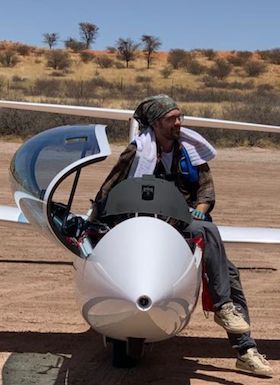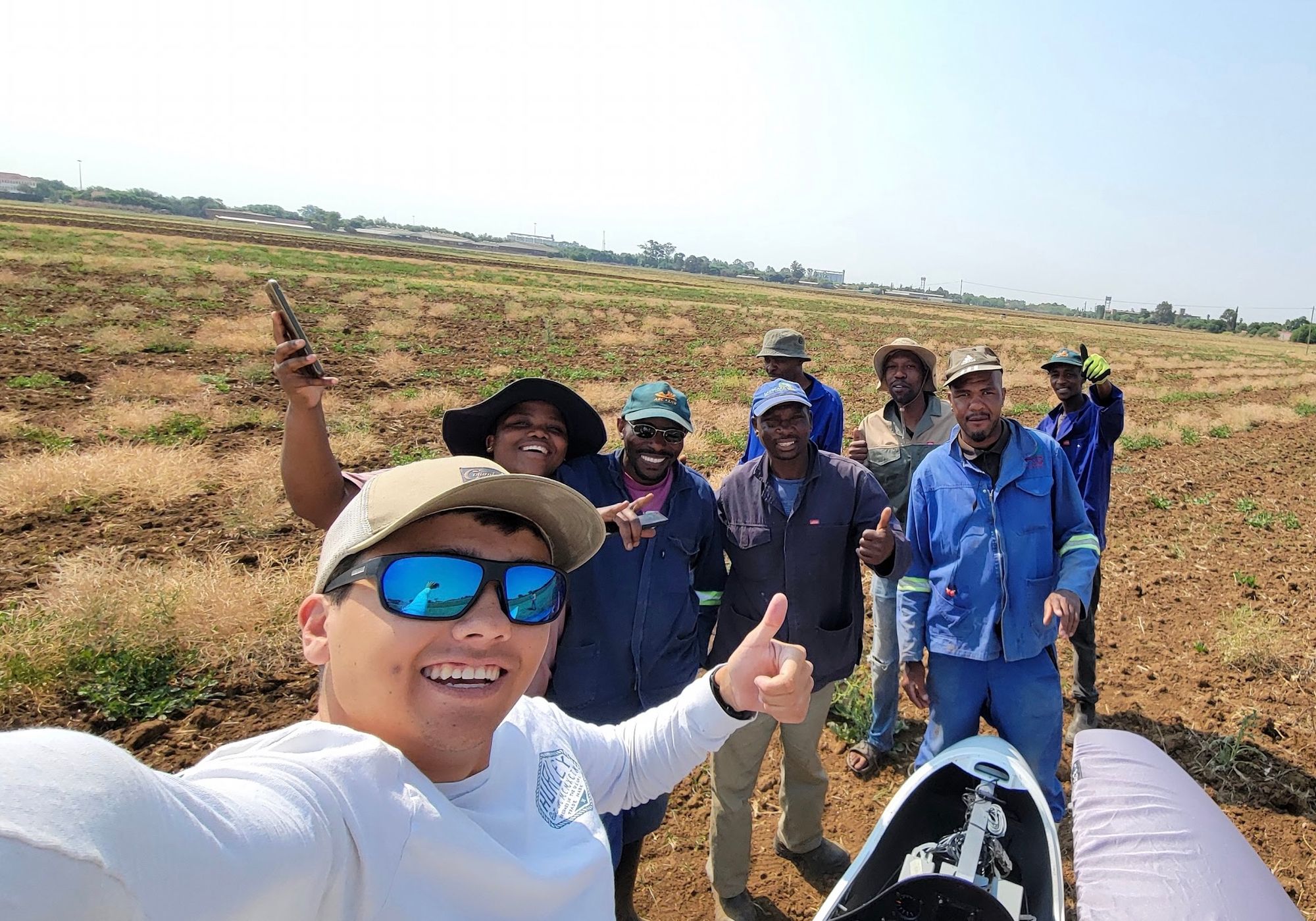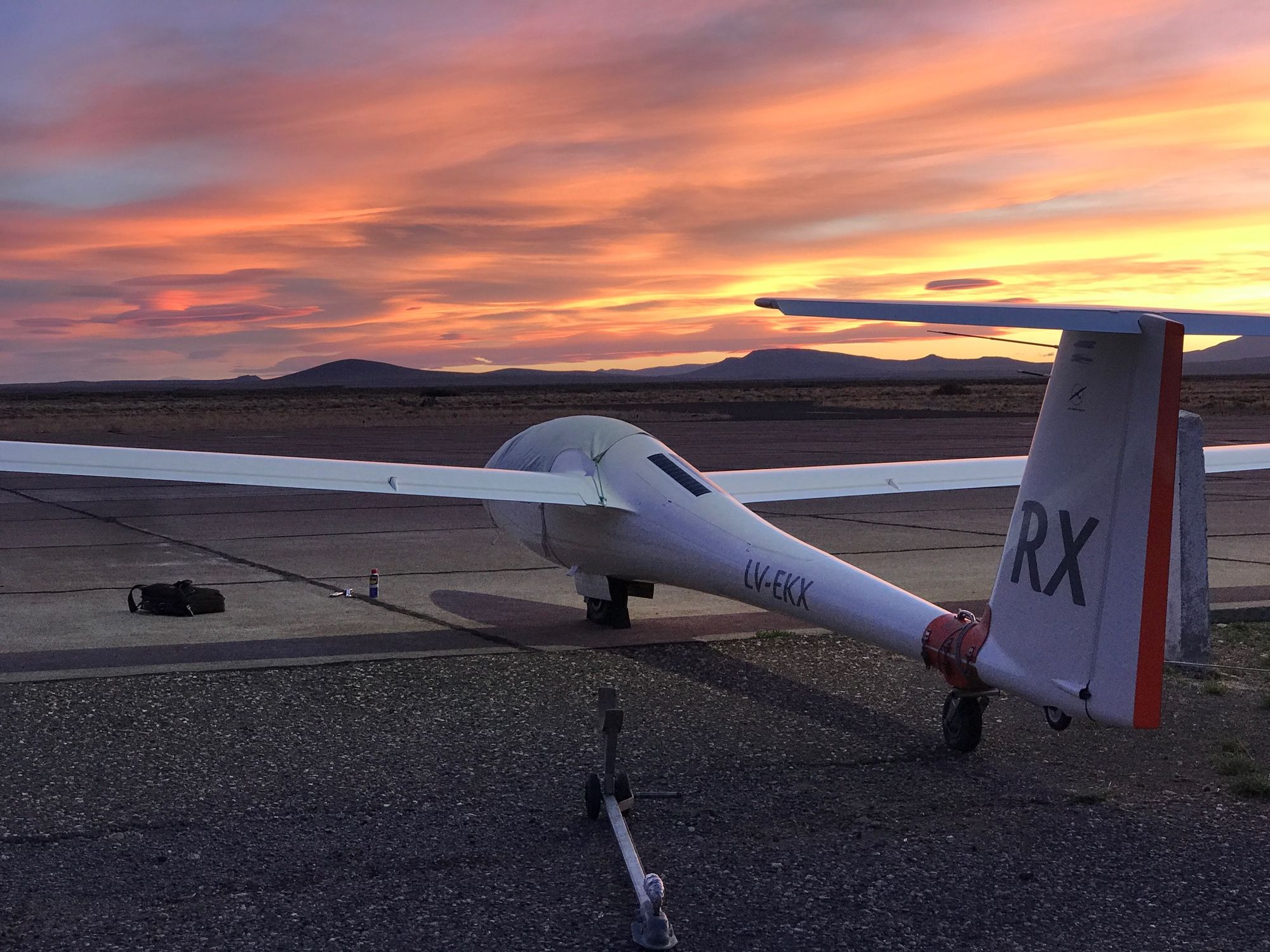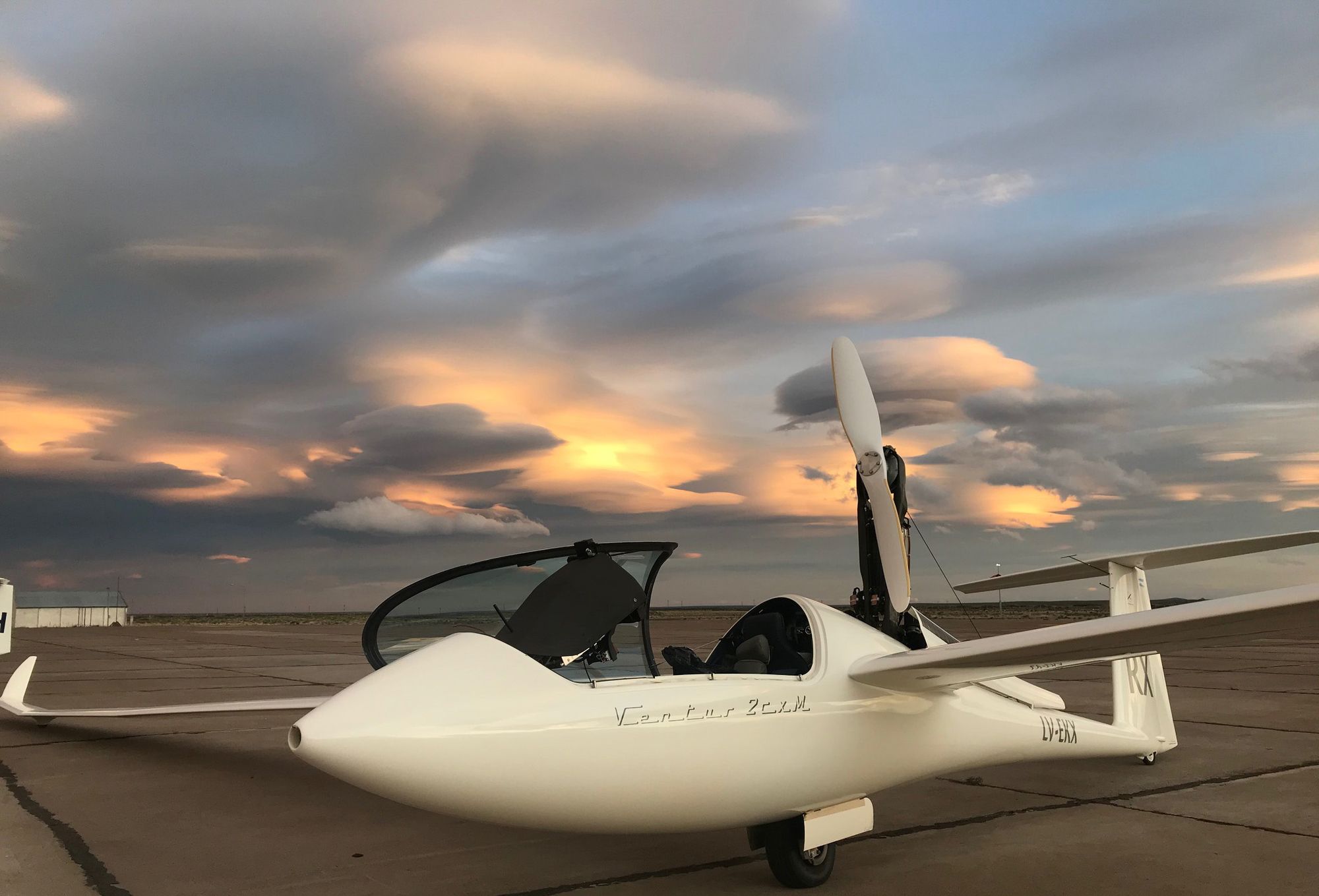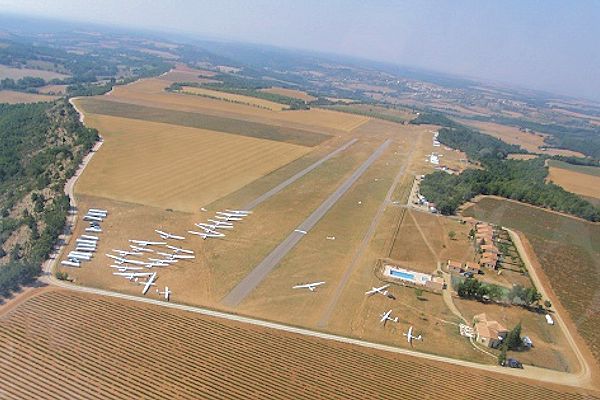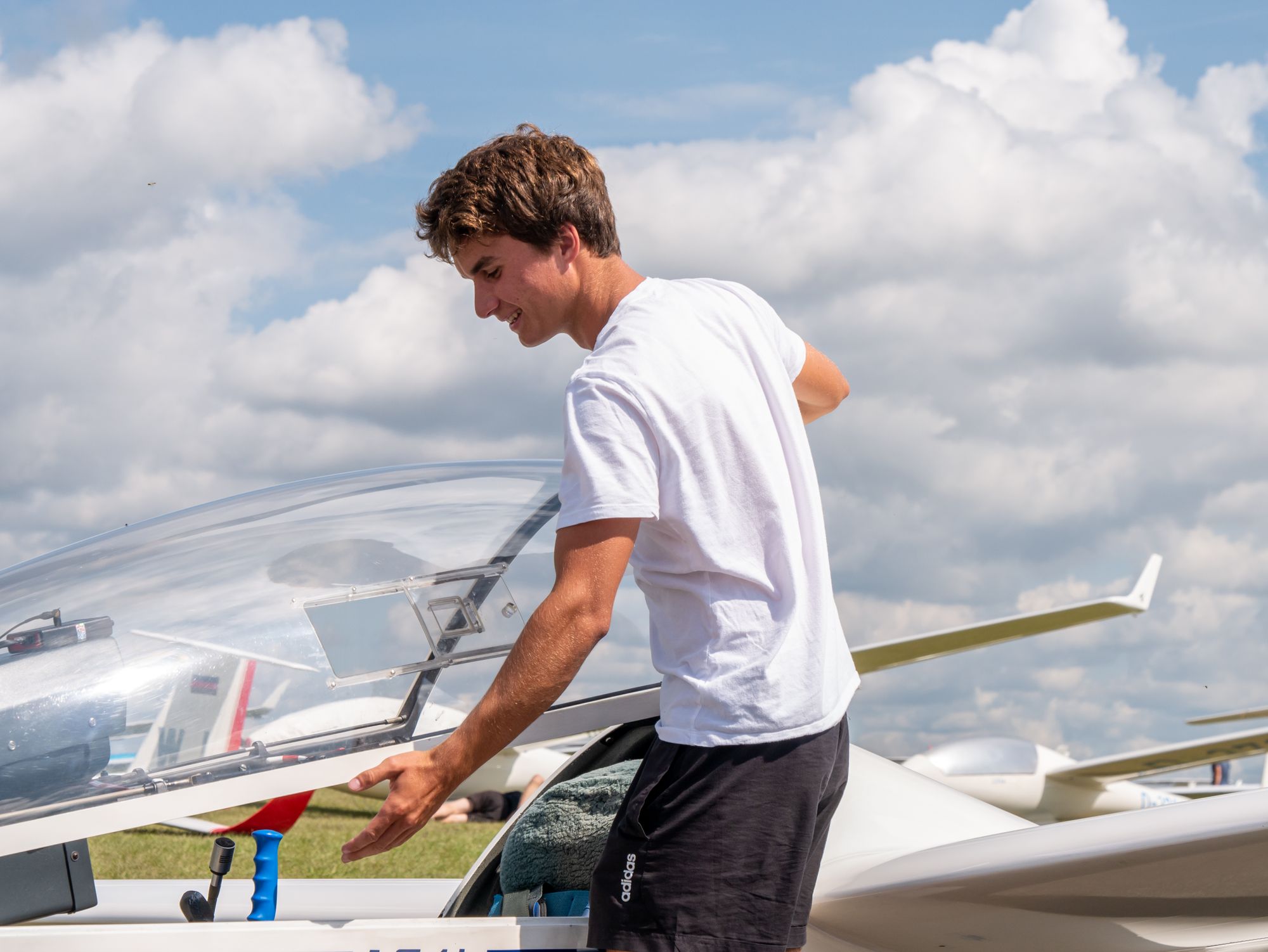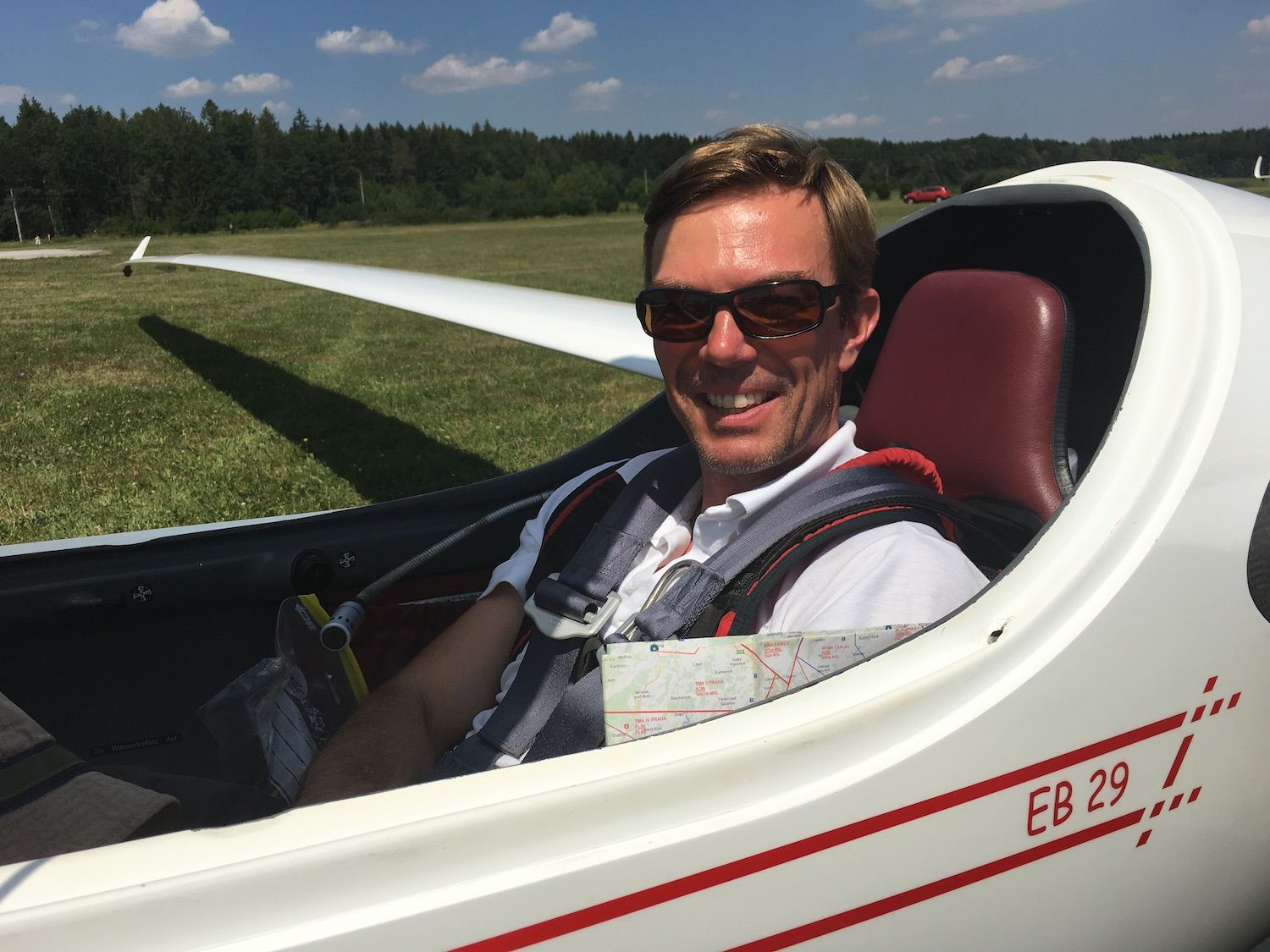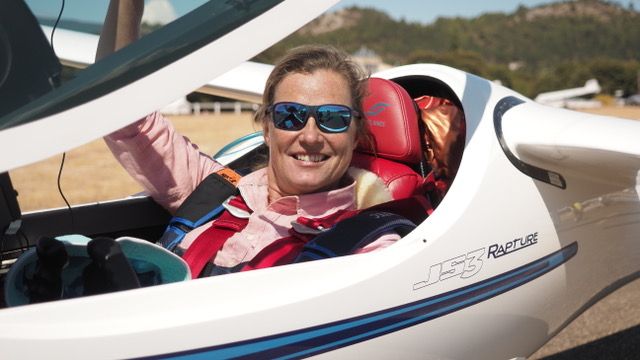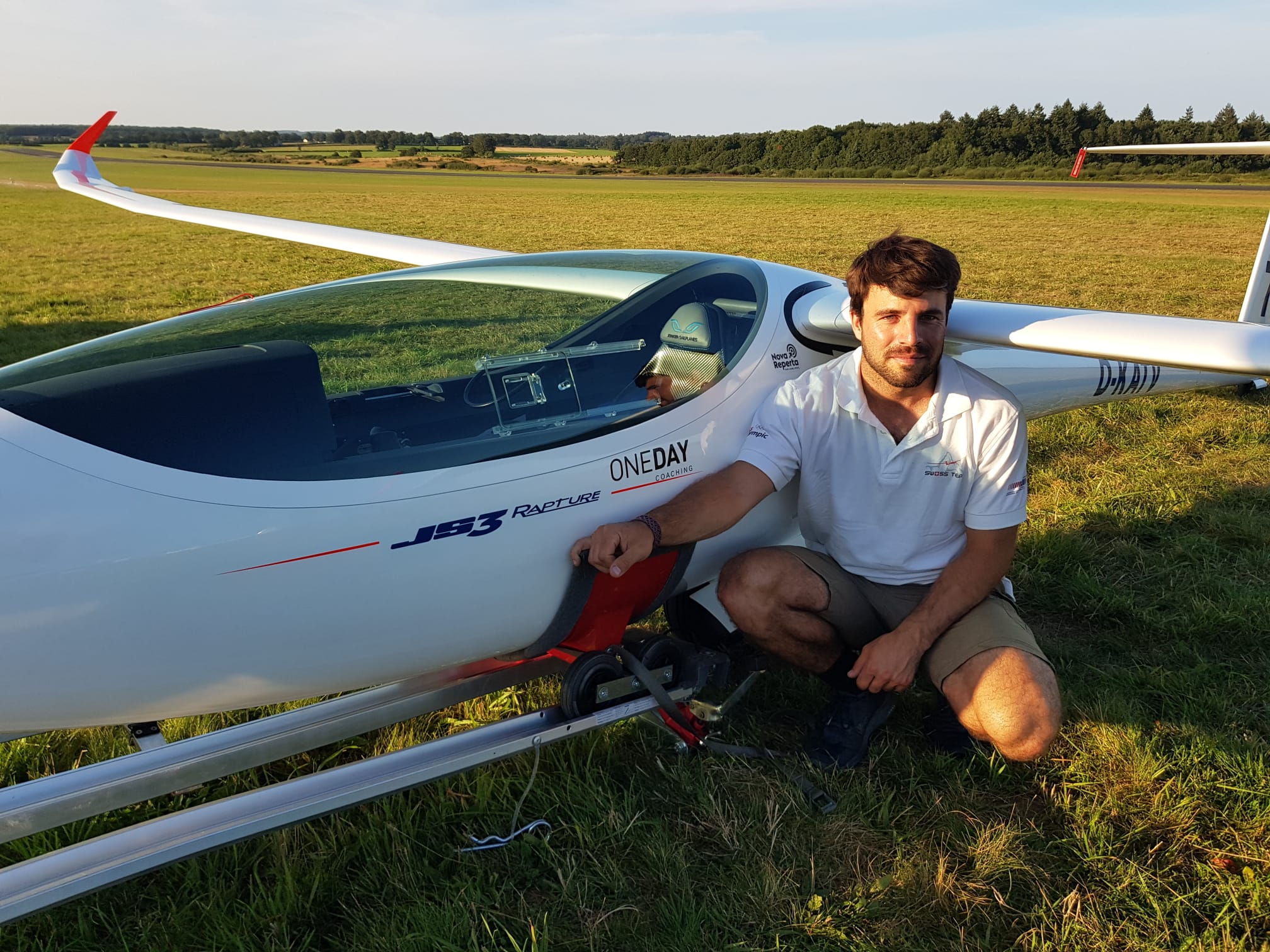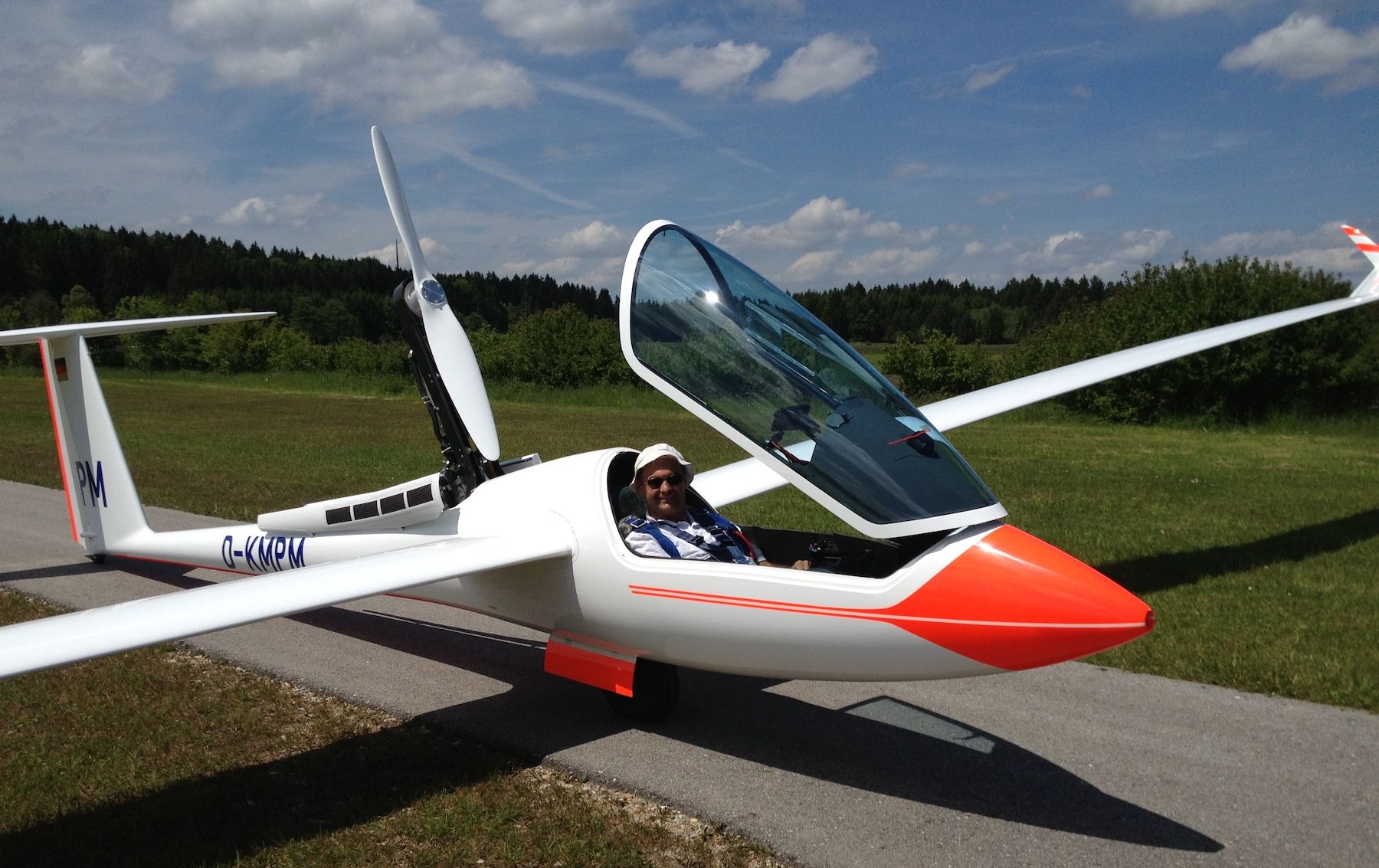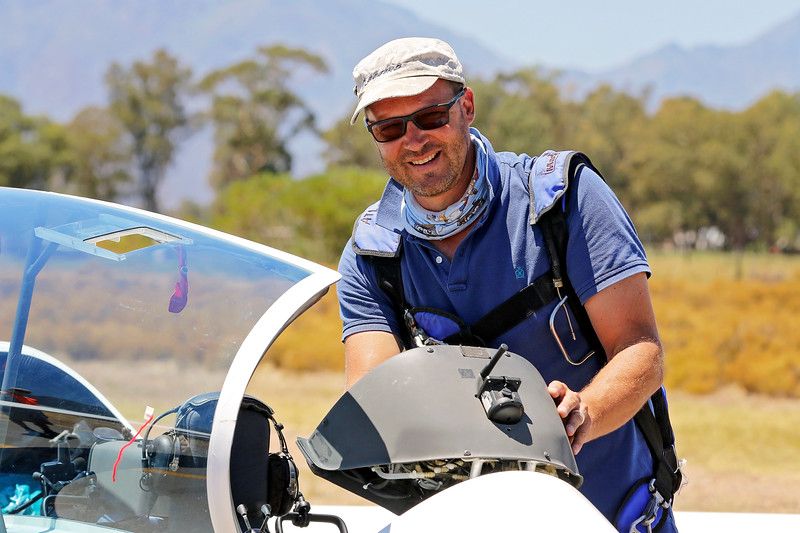James Nugent | Redefining Club Class
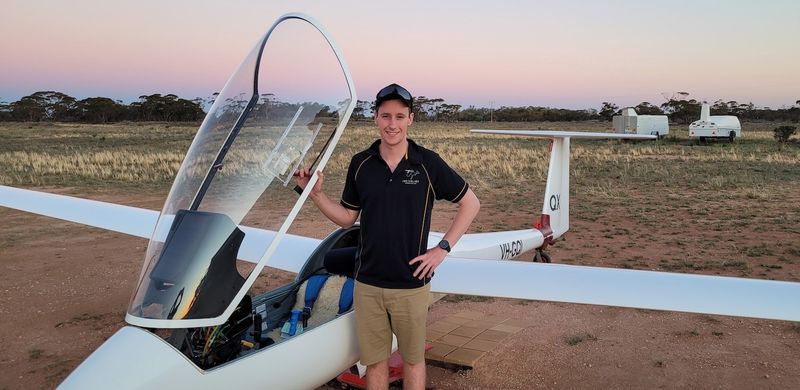
⏳ Flight hours: 950
✈️ Current glider: LS 3 WL
😌 Glider of your dreams: AS 33 Me
🌎 Where you want to go gliding someday: In the Alps, maybe Lesce-Bled/Slovenia or Innsbruck/Austria
With the Australian season slowly drawing to an end, it's time to mention some special moments: On the 29th of November 2021, James Nugent made a winch launch out of Sunraysia Gliding Club and did an astonishing flight with his LS 3. As celebrated in the comments: "a real masterpiece". Let's get to know James and see how he did it!
Hey, James. Congratulations on your successful season and especially this amazing flight in late November! Tell us something about your gliding career: When and why did you start flying?
Hello, thanks for having me! I've always been involved in gliding since a young age. My dad was an ambitious gliding instructor therefore I grew up on different gliding airfields around Australia. I went solo at the age of 15, which is the youngest possible age you can fly solo here. Roughly six months later I took part in my first competition, the Australian Junior Nationals. Since then I've been into competition flying, loving it!
Wow, it's amazing to take part in competitions at such a young age! Well, you still belong to the juniors: Is there any support for young talents in Australia?
Indeed there is a small but truly active junior community called the Australian Junior Gliding Club. It's quite a good setup in my opinion: Besides socializing weekends with some winch launching or aerobatics, they are organizing different stuff for the youngsters like instructor training, airworthiness coaching, and finally the Australian Junior Nationals.
That's the way I got to know all my gliding friends. It's a perfect opportunity to meet up with other young Pilots from all over Australia. Additionally, there is a lot of networking, supporting, and funding from this community. That's quite helpful for flying in international competitions!
Your home base is Sunraysia Gliding Club in the state of Victoria, in the south of Australia. Considering the infrastructure and weather conditions: is this airfield well based for long-distance flights?
It's a small, simple, and humble gliding club in the countryside of Victoria. You probably would say it's in the "outback". Except for the town of Mildura, there's almost nothing. But Sunraysia has a strong community. The members have better friendships, which is advantageous for our XC-flying because there is a lot of support, and you can always count on them. Furthermore, we got access to huge soaring weather. Up to the north, there can be cracking conditions but it is completely unlandable. I haven't been to Namibia yet, but I guess this area can almost keep up with the Kalahari.
Fortunately, even the south offers amazing opportunities and the terrain is much more friendly with a lot of paddocks for outlanding. This season we noticed a big difference concerning the start of thermals in Sunraysia. In the former seasons, we used to start later. The zone around our airfield is quite humid because of all the irrigation systems in the paddocks which amplifies this effect. Anyway, this season we could start before noon and the real big flights became possible, even starting on the winch. There is no aero tow at Sunraysia!
Let's move over to your flight on Monday, the 29th of November. You declared a 750km triangle. Would've been your biggest one so far?
Yes, that's right. I've flown such distances in free flight but not declared. As I flew mainly in competition the past years I wasn't really into declaring triangles. However, in this flying week, I made it a goal to declare something big and give it a try!
Seems like it worked out well for you! What about the specific weather on that day, how was the forecast? Did you already have the 1000km back in mind?
On Sunday, the forecast seemed to be quite promising for the following days. Unfortunately, I didn't remember the specific forecast clearly. On the first leg, running parallel to the Murray River, a trough was forecasted relatively stable during the whole day. It caused early development and the possibility of some thunderstorms in the afternoon. My idea was to use the early cumulus on the first leg and after that, I decided to head west to not be affected by the overdevelopment.
Overall this day had cracking conditions to the south of Sunraysia without many significant weather interferences. On the next day, the conditions were predicted even better. Therefore I planned to declare a 750km to practice for the 1000km triangle on the following day.
Well, that turned out differently. Tell us something about your flight: Did the day work out as predicted?
The day started a bit earlier than expected. I launched about 30 Minutes before initially planned. Especially the first part of the flight, crossing the Murray River, worked out well. Usually, the conditions in this area aren't quite strong so this was a big timesaver. Around midday, the thermals quickly shot through 6.000ft and I got ready for racing mode. All in all, I made very good progress on the first leg. On the second one, conditions improved further. The cloud base touched 10.000ft and I flew as aggressively as I could on a long-distance flight.
Wait, what does it mean for you in particular: flying aggressively on big distances?
As a competition pilot, I usually push hard and take a competitive risk to get low, always looking for a strong climb. But on such a long flight it doesn't matter to always max out your possible speed. If you are a bit slower you won't recognize it. I don't fly as fast and deviate more because it's much more important not to get stuck because of getting low. Furthermore, it's useful to study the area precisely. I was planning this flight for about five hours the day before, studying the terrain and the weather conditions. You should only execute your plan without making too many decisions during the flight.
On the second leg I knew 100km previously: "on track, the Big Desert National Park will appear which is completely unlandable". I knew gaining height was important before reaching this area. Above it, I stayed at cloudbase and took weak climbes, always in mind to have an exit out of the desert in the direction ahead. I had to make sure not to be forced to turn around because of getting too low and losing a ton of time. Summarized, it's all about managing your resources, flying consistently, and not getting stuck to avoid stressful situations.
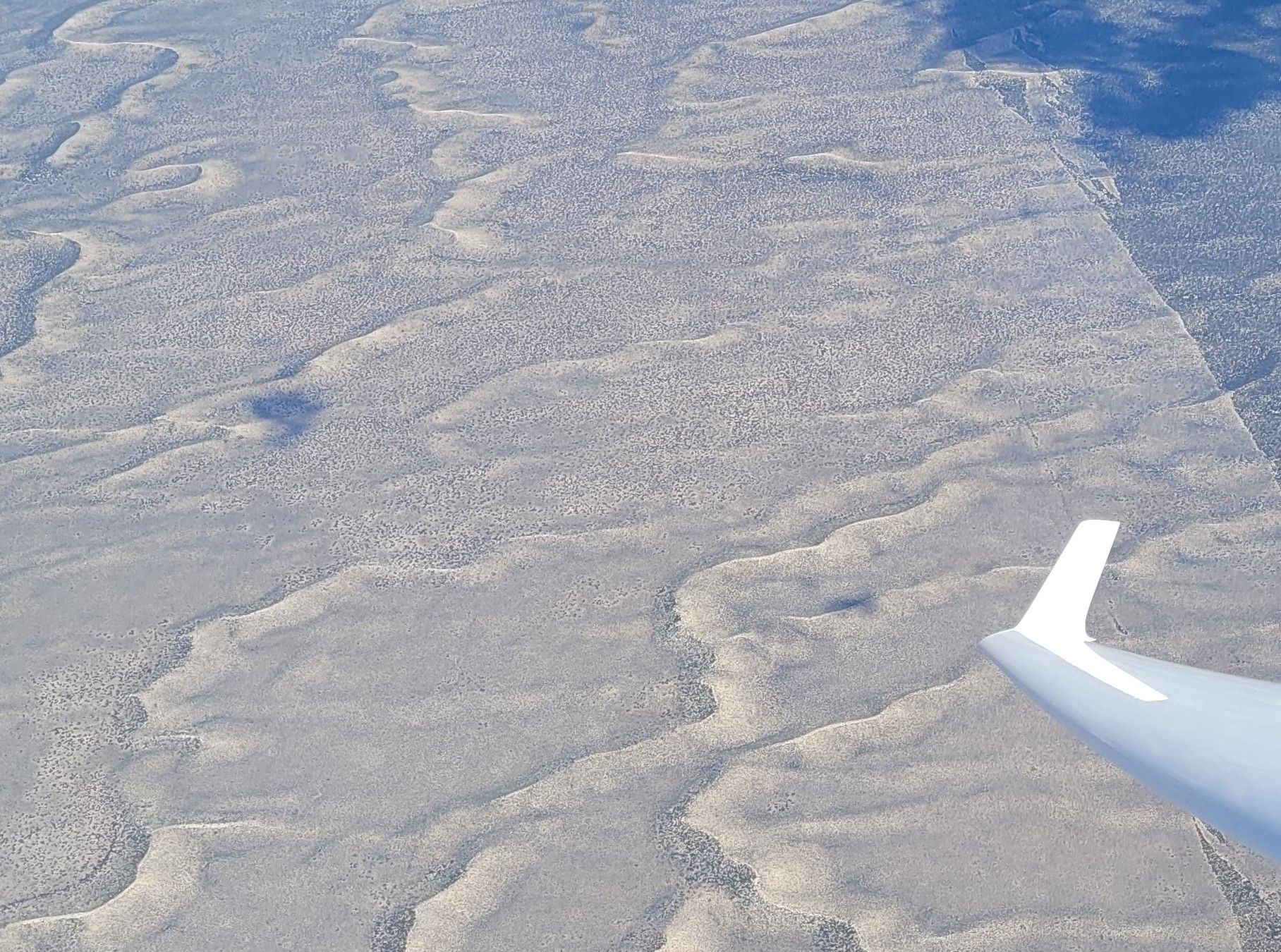
At what moment did you notice that the magical distance could be possible?
The conditions to the end of the second leg got really strong. When the 600km mark was reached I recognized 1.000km could be possible. Essentially this was the point of deciding to give it a try or simply complete the task, to rest for the following day. The weather forecast for Tuesday had been even better but at this point, nobody knew how the prediction would turn out in reality. If I hadn't tried the 1.000km there and then and the forecast had gotten worse for the next day, I would have been quite disappointed. Therefore I went for it!
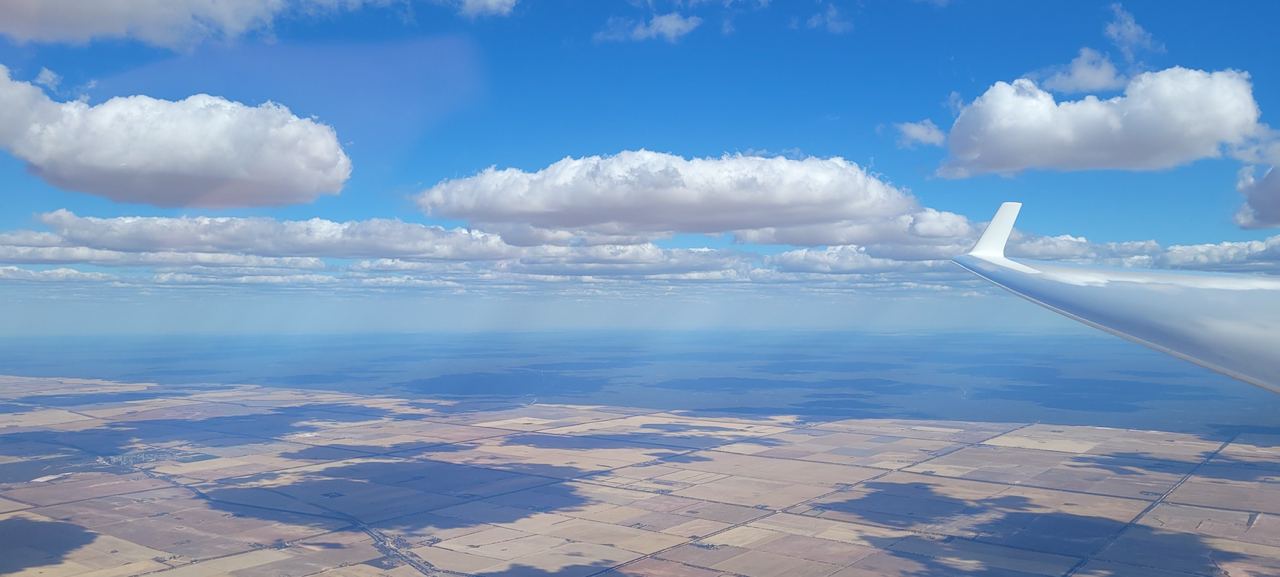
So, did you change your tactics at that point?
I flew slightly past the second turnpoint and had two options subsequently: to extend the flight eastward to the middle of the actual triangle, turn west again and line up on a predicted convergence in the evening. I picked up a couple of lines that were forecasted by SkySight through that day, so I was confident about it. The second option was to turn and head straight west for the superb conditions I've been in before. But as mentioned, thunderstorms were predicted in this area caused by the stable trough line.
I went for the first option and tried to set my third turnpoint as accurately as I could. The challenge was to plan this leg long enough eastwards so that my fourth leg into the west wouldn't collide with the weak area of Loxton (by the river). This worked out quite well. In the evening my system calculated the 1000km before I reached it.
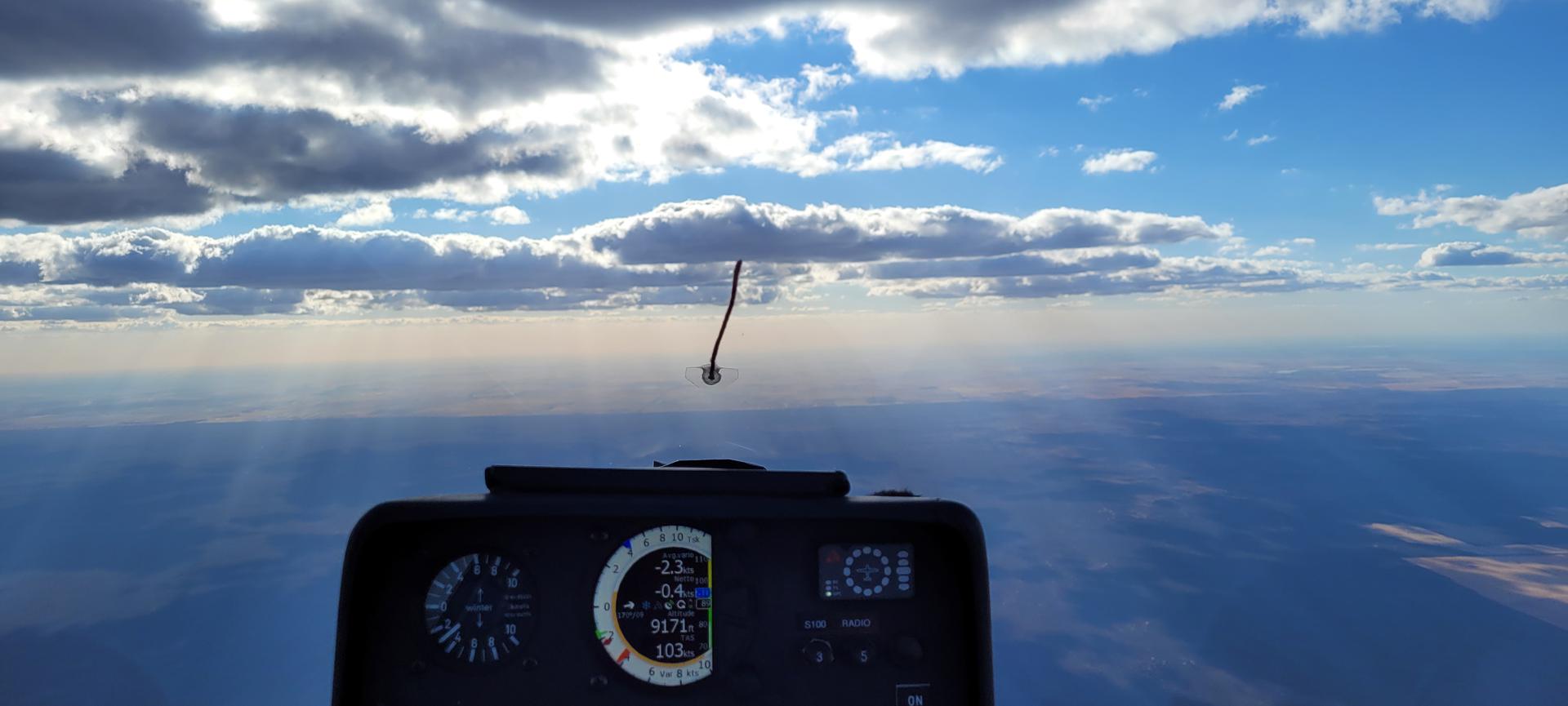
The fifth leg looks quite exciting! The day died out and you skipped the first solid thermal. Did you have time pressure considering the sunset?
As already said, I picked a line that was forecasted from SkySight. By positioning the glider into the forecast I managed a better glide ratio in less sinking air and benefited from the netto to come home right for sunset. At this part, I did some calculations: "about 2 knots should be necessary to land before sunset". Every time the thermal dropped off, I continued to find something stronger. I tried it four times until I found the proper thermal which brought me back to Sunraysia right at sunset.
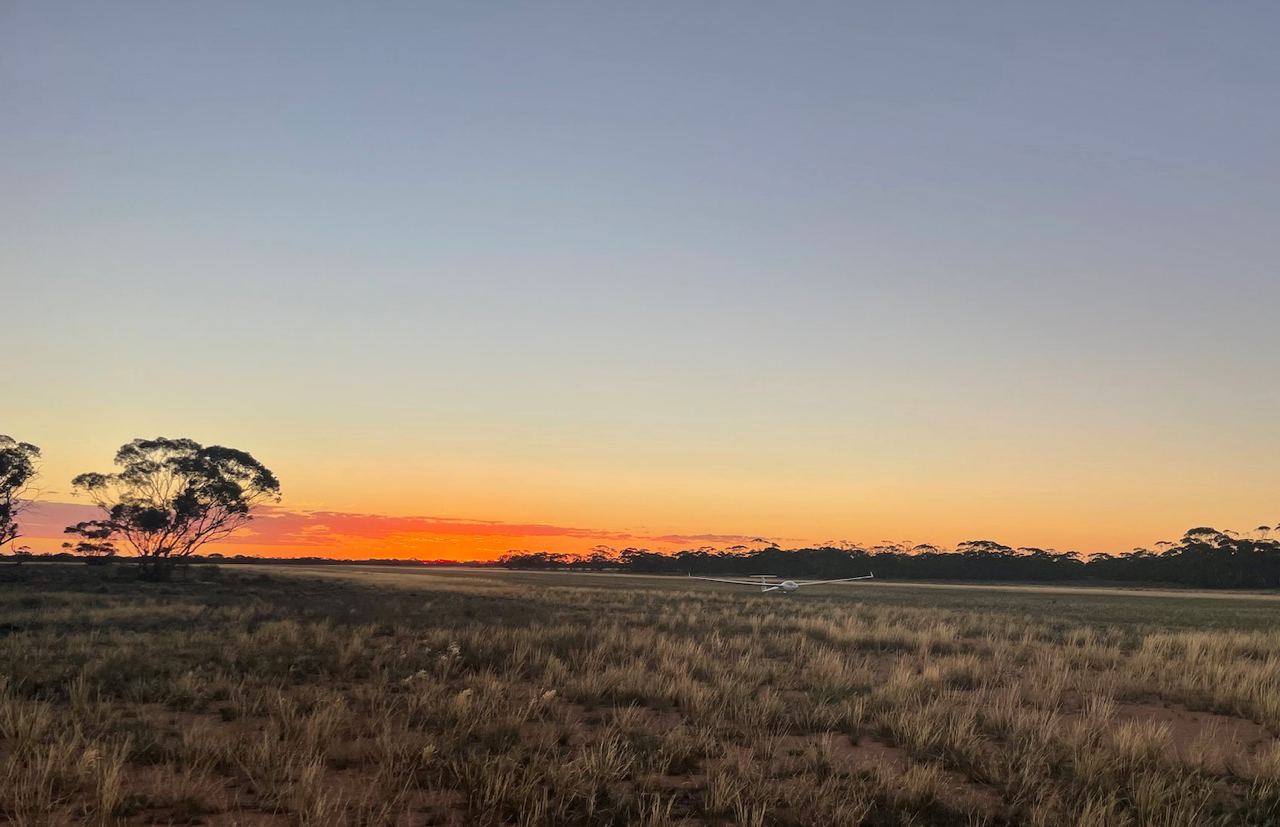
As we can see you take advantage of live data during flights. In this case, SkySight offered you suggestions to get home. Do you think there will be even more possible in the future by using data more efficiently?
In my opinion, live data is already a big part of cross-country gliding. It supports the pilot to fly faster and further. Maybe it's a bit like the times when the first motorized gliders came up: People got more confident in exploring and trying out. If you know how to interpret the live data it's a fantastic tool. We are still learning how to use it most efficiently, so there's still room for improvement. The most important aspect is to use it responsibly. We should not forget to look out and take care of other gliders.
So, did you fly on the next day to try the big Triangle?
Yes, I did. The conditions had improved compared to the day before. Unfortunately, I was too exhausted and didn't nail the 1000km again. It was about 600km.
Something about you and the LS 3. On that day you achieved the highest sprint points in Australia. Even your actual cruise speed was higher than all the 18m gliders: The LS 3, a real racehorse in combination with your ambitious flying style?
I bought it a few years ago. It was stored at a barn in the outback of Australia. The glider hadn't flown for 12 years until I bought it. Within the 3000-hour inspection, I overhauled the glider completely. So there's a bit of a relationship between us. I'm quite happy with LS 3 and got about 700 hours on it. Usually, I fly fully ballasted and cruise as quickly as possible. At a specific point, it doesn't make sense to fly even faster. The thick wing of the LS 3 is producing drag at very high speeds. At last, it's the combination of my confidence in this glider and flying directly with less deviation at high cruise speeds. In my opinion, that's the key to flying fast with club class gliders.
What are your plans for the next season?
Competition-wise my teammate Ryan and I are looking forward to flying the Junior Worlds in the Czech Republic next August! In the upcoming Australian season I'll compete in the Pre Worlds for the World Gliding Championships in Narromine 2024. Besides the competitions, I'll try to declare a 1000km triangle. So, a lot of events are coming up!
James, thanks for the interesting interview. Do you have something to add?
Yes, thanks for this amazing platform! There are a whole bunch of nice features and I love the easy possibility to link pictures. This takes sharing flights with all pilots to another level! Keep up the work, it's quite motivating for the gliding community!
